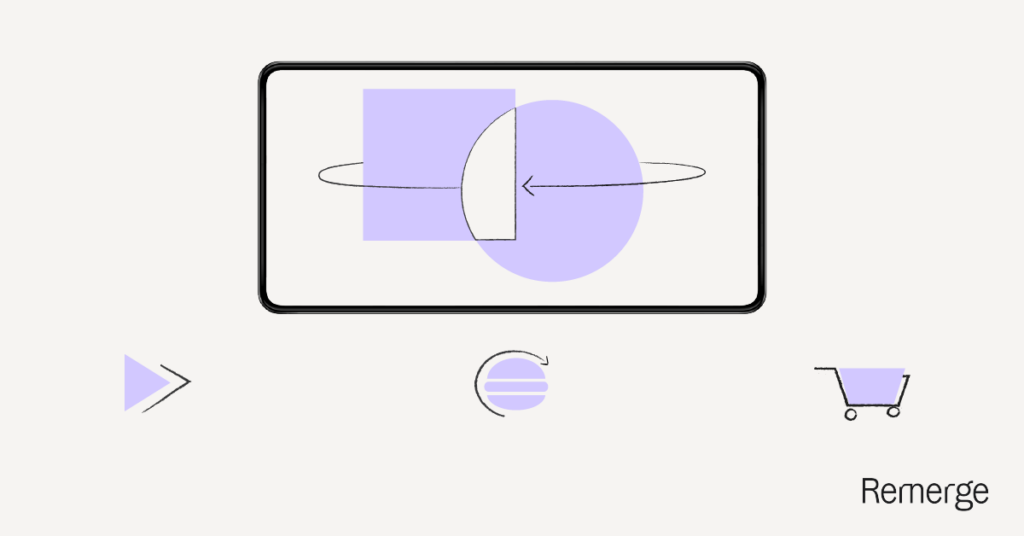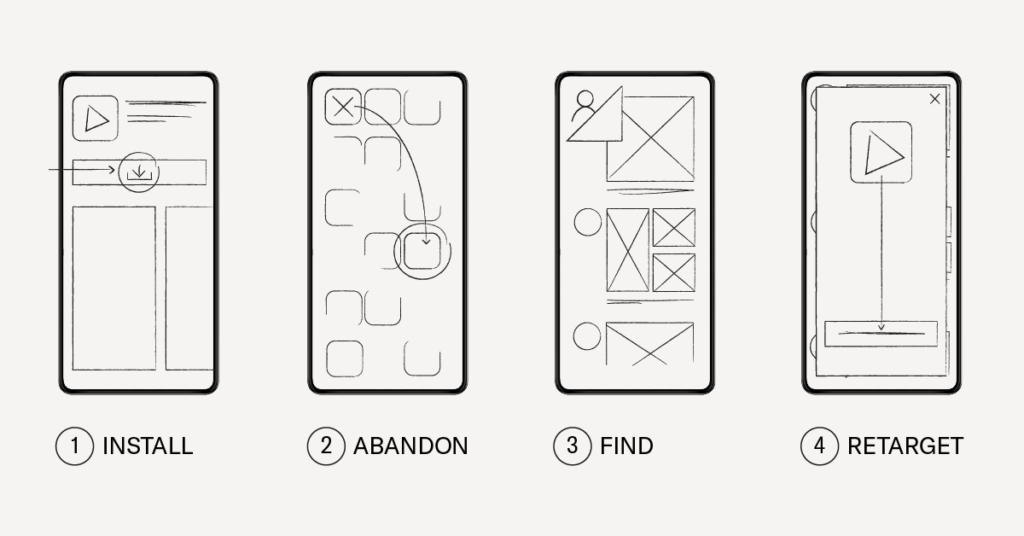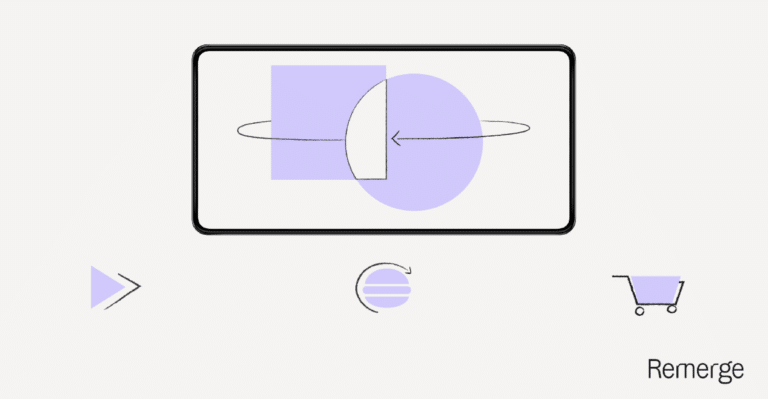Branch’s partners navigate the uncertain world of mobile advertising on behalf of some of the biggest apps in the world. Here is a guest post by Stephen Massaro, Director of Channel Alliances at Remerge, a leading Demand Generation Platform

How to re-engage your users after the holiday season:
It’s the start of a new year. If you’re anything like me, your social feeds and email inboxes will have been awash with the latest facts, figures, data points, charts, and insights about the state of mobile advertising and how it fared in 2021. I’ve enjoyed catching up on all of this content from various partners and thought-leaders, and from what I have seen, it’s abundantly clear that our industry continues to thrive in the face of many uncertainties.
Ad tech consolidation, the rollout of Apple’s privacy changes, and the immense growth of app usage and revenues ensured last year was one of the most eventful 12 months for mobile advertising. Mobile transactions accounted for more than $116 billion. A drop in ID users on iOS changed how marketers allocated budgets across operating systems (OS). Users spent a third of their daily waking hours on devices, and advertisers spent a staggering $295 billion on mobile ads.
A great deal happened throughout 2021: I know I’m not alone to have felt like the busy year aged me quite a bit, and no time was busier than the holiday season. As the dust settles on one of the most crucial times for app growth, how do we keep up with the momentum throughout the rest of the year?
The holiday season brings joy to app marketers
E-Commerce, quick service restaurants (QSR), and entertainment apps are often among the big winners during the holiday season.
It is predicted that global holiday e-commerce sales for 2021 will hit $910 billion (an 11% increase over 2020), with mobile shoppers spending enormous amounts during Black Friday, Cyber Monday, and the remaining seasonality period. Last year, 58% of US consumers stated they planned to shop more online during the holiday season than they did before the pandemic.
For QSR apps, almost 60% of US consumers downloaded at least one new restaurant app in the lead-up to the holiday period. Much of the country has been dealing with a mix of cold temperatures and a new Covid variant, so it’s no surprise to see huge growth for this vertical, which will most likely continue as 2022 progresses.
The popularity of entertainment apps is also high around Christmas and New Year. This vertical generated the most revenue from a non-gaming category on iOS and Android during this period in 2020, while the Covid-19 crisis led to an eye-watering uptake in app usage for video streaming platforms. It’s worth mentioning that revenues for video streaming apps exploded during the pandemic, as many people stayed at home amid numerous lockdowns; this market could be worth $42 billion by 2025.
That said, the holiday season is an expensive time to acquire new users: CPMs (cost per mille) are typically higher than other months in the year as advertisers compete to attract customers who are investing in gifts and activities with loved ones. Advertisers pay a premium to acquire users during this period – but how do they keep them coming back to the app in the months that follow?
App retargeting provides an opportunity to stay relevant.
The goal of any retargeting campaign is to encourage users to reinstall or re-engage with an app and complete an event such as a mobile purchase. One popular retargeting tactic employed by app-savvy marketers is in-app retargeting. This remains a powerful mobile marketing strategy for both Android and iOS and can help to reduce user churn rates after the busy festive season. It offers a chance to create meaningful relationships with customers by adding value at the right time, meaning advertisers can stay relevant after all the present-buying, take-out tasting, and Christmas movie watching sessions have subsided.

Is retargeting still a viable option in the privacy-first era?
You might wonder, how can retargeting still be effective? And this is a fair question since the initial market perception following the rollout of the App Tracking Transparency (ATT) framework was that such approaches would become obsolete. However, it hasn’t panned out that way just yet. Leading apps continue to invest in retargeting, and at Remerge we are delivering some of our highest-performing engagement campaigns.
Furthermore, Apple’s privacy changes do not affect Android. We’ve observed that retargeting on this operating system has remained a profitable marketing strategy for our clients. Evidently, the overall impact on certain aspects of the industry was not as catastrophic as many anticipated.
Despite the arrival of ATT, we delivered more ad clicks and recorded a jump in re-engagements (unique app opens) for all of our retargeting campaigns combined. When looking at our November year-on-year performance, we saw a substantial increase in the number of ad clicks (+231%) and re-engagements (+221%) for our retargeting campaigns on Android, globally. During the same period for iOS, we registered 50% more ad clicks and 71% more re-engagements.
How is iOS still attractive for app marketers running re-engagement campaigns?
The Android market has not been affected by Apple’s privacy changes. It accounts for approximately 200 billion ID-based bid requests every day, which means retargeting on this OS can still provide a very favorable return on investment (ROI).
Even with a decline in ID traffic, the available inventory for identifiable Apple users is still attractive for app marketers who want to run re-engagement campaigns on iOS following the holiday period. As it stands, we see that more than half of the inventory on iOS still has an IDFA – that’s close to 40 billion bid requests per day. App marketers are taking advantage of this opportunity to maximize their lifetime value (LTV) and increase revenues by re-engaging their high-value users.
How do I set my re-engagement campaign up for success?
Start building a solid segmentation strategy if you want to re-engage newly acquired users after the holidays. Consider splitting users by in-app events, such as install, interaction with an ad or last purchase, and timeframe (i.e., those who last used the app before the holiday period).
From here, you can create specific ads and messaging for these segments to boost your chances of sparking their interest. Here are a few quick tips from different industries on how to keep your customer visiting your channels frequently and nudge them to convert faster.
E-commerce
- Offer limited time-deals for the months immediately after the holiday period. These can focus on upcoming events such as Valentine’s Day or Easter.
- Upsell other items that match what your users purchased during the holiday season.
- Entice holiday browsers or those yet to purchase with 2022 discounts for similar products they have abandoned in their carts.
- Start building brand awareness for spring and summer product ranges – many, like me, have warmer weather on their mind, and now is the perfect time to get users back into the app.
Entertainment
- Are there new episodes of your users’ favorite shows available from the early months of the year? Encourage subscribers to upgrade their memberships (if possible) by highlighting new content for 2022
- Target those that did not renew their subscription or never converted from a trial in 2021. Use New Year messages to bring them back in for a new free trial.
- Did your users start a show before Christmas or stop listening to an artist over New Year? Remind them about existing content or highlight new content in the same category.
QSR
- Retain acquired customers by showcasing new restaurants or local options that have changed their menus for 2022.
- Continue to take advantage of times of the day. Show ads during peak times such as lunch and dinner.
- So many of us have a New Year’s resolution to spend less, so encourage users to place new orders by offering the right benefits, such as a coupon code for a discount or free delivery.
You can entice customers to return with the above best practices. And this year, we are on the lookout for some industries that may take center stage as 2022 unfolds. Let’s take a quick look at what lies in store for them.
Travel:
We’ll likely see a spike in travel app adoption as countries around the world ease Covid-19 restrictions in the run-up to spring and summer. In the US, travel apps recorded an 86% increase in downloads in July 2021 vs. July 2020 – a sign that this vertical could experience some serious growth in 2022 when people return to their previous level of mobility.
Health & Wellness:
In January of this year alone, mobile fitness and workout apps saw 16.2 million downloads worldwide. And going back to January 2020, we saw an 80% increase in downloads year-over-year. The demand for professional and high-quality training sessions for the home soared during the pandemic, with many consumers now opting for apps over gyms. I would expect this trend to continue.
Banking:
The pandemic also had a considerable impact on the finance industry: consumers were drawn to banking and payment apps as they limited personal contact with others to avoid contracting the virus. Additionally, last year’s Gamestop and AMC events highlighted just how many consumers are becoming retail investors via the many mobile investment apps within the space.
According to the most recent report on US consumers from Branch and M&C Saatchi Performance, there is no doubt that the general rise of finance apps: there was a 22% increase in downloads when comparing H1 2021 with H1 2020. Many companies are already starting to roll out new features and incentives, which could lead to a further surge in the adoption of mobile services in 2022.
Parting words as we dive into 2022:
You could adopt many more potential strategies. The intention here is not to be exhaustive but rather to highlight some of the major campaign strategies you should explore. In an app ecosystem where we need to balance out the ability to map user journey so extensively with the need to be mindful of end-user privacy concerns, constant innovation is vital to ensuring our retargeting is impactful.
Retargeting has proven immensely useful in supporting apps to retain and bring customers back to experience new buying cycles. And it’s key that brands remain flexible and enthusiastic about experimenting with which festive season besides the end-of-year holiday period. For example, Valentine’s Day is just around the corner – this is an ideal time to get customers back to your app with some web-to-app campaigns, new user journeys, and advertising via your most impactful channels.
About Remerge
Remerge is a demand-side-platform (DSP) that helps growth marketers to maximize their user lifetime value (LTV) and drive revenue by keeping existing users engaged with highly relevant and personalized mobile ads.
Since 2014, the company has contributed to the growth of hundreds of apps across all major verticals, including gaming, delivery, e-commerce, and travel. Its international team of specialists closely collaborates with clients to deliver high-performing retargeting campaigns through innovative solutions, supported by a powerful information infrastructure.
Stephen Massaro

Stephen is a veteran within the mobile advertising space. He is currently Director of Channel Alliances at Remerge, where he works with agencies, tech, and supply partners to help clients grow their apps in the privacy-first era.
Branch provides the industry’s leading mobile linking and measurement platforms, offering solutions that unify user experience and attribution across devices and channels. Branch has been selected by over 100,000 apps since 2014 including Adobe, BuzzFeed, Yelp, and many more, improving experiences for more than 3 billion monthly users across the globe. Learn more about Branch or contact sales today.

